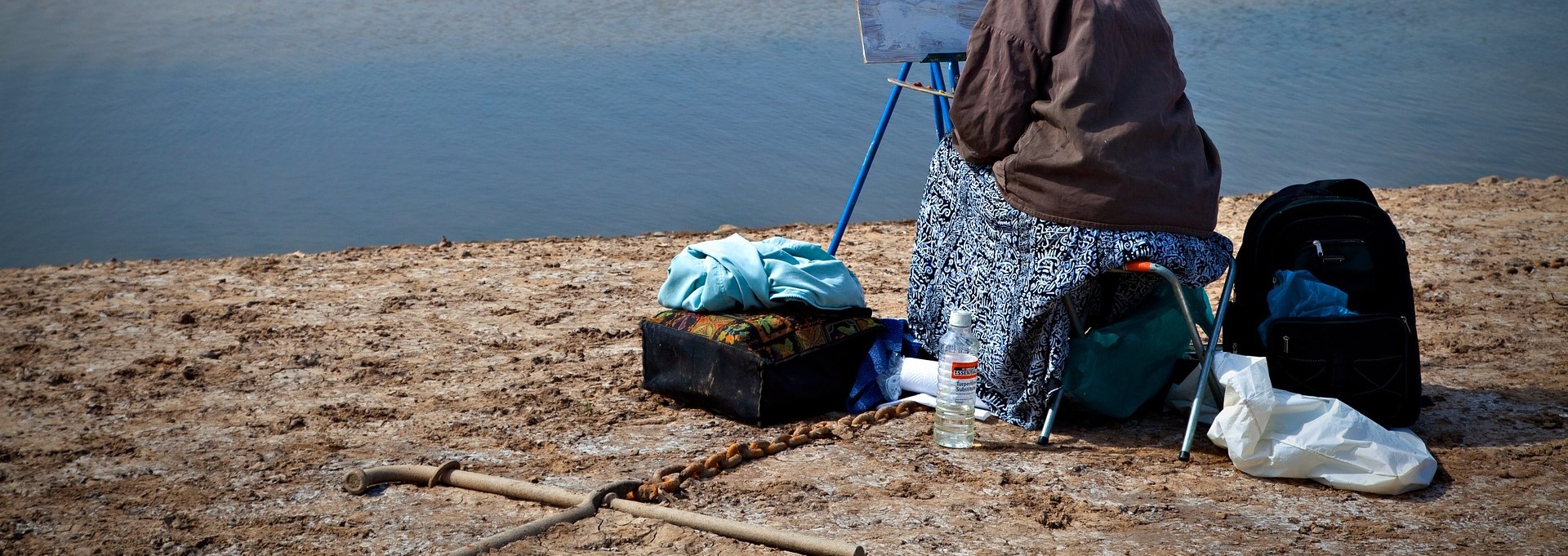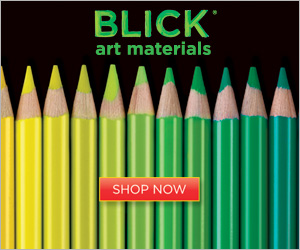When packing plein-air gear, don’t take too much equipment.
It’s possible that searching for a suitable view will take time. You won’t be able to enjoy the long walk if you have a heavy bag.
Your Basic Kit for Painting Outdoors
First I’ll share with you the list promised in the title, then some explanations will be given. So, here are the supplies which are definitely going to come in handy:
- a portable, collapsible easel;
- a panel, canvas, or maybe paper;
- paints;
- a suitable solvent (mineral spirits for oil and water for watercolor) and a brush-washing container;
- brushes;
- a flat piece of wood or plastic as a palette;
- a stool;
- paper towel or rags and a trash bag to carry them away – people who love nature, don’t litter on grass.
Many artists consider that the best field easel is a French one. It has a capacious drawer for different supplies and folds down to become the top of the box.
I like my lightweight tripod, which supports a board. I can assemble and disassemble all the construction easily. The steady, three-legged platform allows me to experiment with larger panels and canvases.
Your easel should preferably fit into a backpack. There are special art backpacks – their pockets hold both a panel and a tripod.
Plan on using 1-2 canvases per day. As far as paint goes, buy a limited number of small tubes in advance. When working outside, painters usually take 10-12 colors. Impressionist Claude Monetfamous for his vibrant plein-air works used:
- Vermilion and Alizarin Crimson;
- Viridian and Emerald Green;
- Cobalt Violet;
- Cobalt Blue;
- Cadmium Yellow;
- Lead White.
The optimal number of brushes is 5-7. Keep them in a waterproof case.
A comfortable folding stool is relatively heavy (about 2.5 pounds), but you’ll need something to sit on. If you are painting among large stones, a cushion can replace the stool.
Extra Pieces of Equipment
Artists have different preferences. Perhaps you cannot imagine working outdoors without:
- a viewfinder;
- your sketchbook and a graphite pencil (compositional sketches simplify painting);
- palette knives;
- a camera – for recording the scene in case you have to finish what you started in your studio.
Are you an oil painter? If so, I’d advise you to take a wet-panel carrier as dust-free painting storage. You can buy one or make it yourself.
You may be thinking about high art, but don’t forget more practical matters. Working outside in summer, the following are vital:
- insect repellent;
- a hat with a wide brim;
- sunscreen;
- a light raincoat;
- a bottle of water.
A thermos of hot coffee will help you keep warm in autumn. And snacks always prove useful 🙂
*If you buy something through the banner I will earn a commission, at no cost to you. More info


